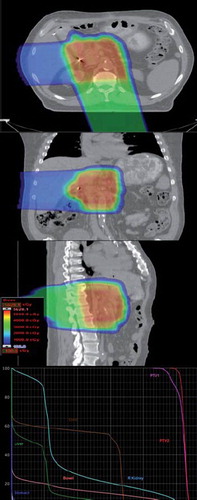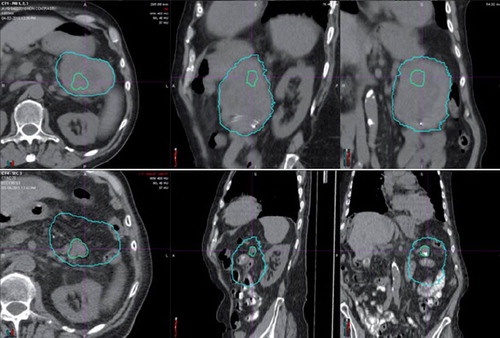Figures & data
Figure 1. Typical optimized proton plans later in our series utilized a posterior or posterior-oblique field delivering approximately 75% of the prescribed dose in conjunction with a right lateral or lateral oblique field delivering the remaining 25%. As proton beams are associated with no exit dose beyond the target, significant sparing of anterior small bowel and stomach tissues could be achieved. No patient treated in this fashion experienced grade 2 or higher gastrointestinal toxicity. Based on this favorable toxicity profile, all patients with pancreatic cancer at UFPTI are treated using this field configuration.

Table I. Patient-specific field configurations, doses, normal-tissue exposures, follow-up durations, and most severe toxicities.
Figure 2. Patient #5 presented with a marginally resectable adenocarcinoma of the pancreatic tail (top three images). He achieved a virtual complete radiographic response (bottom three images) after 50.40 CGE in 28 fractions with oral concomitant capecitabine at 1000 mg twice daily on treatment days. He did not undergo surgery due to the emergence of multiple liver metastases shortly after completion of proton therapy.

